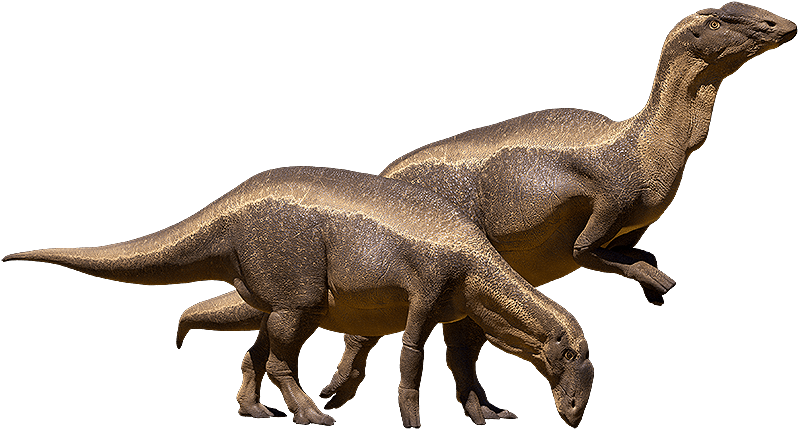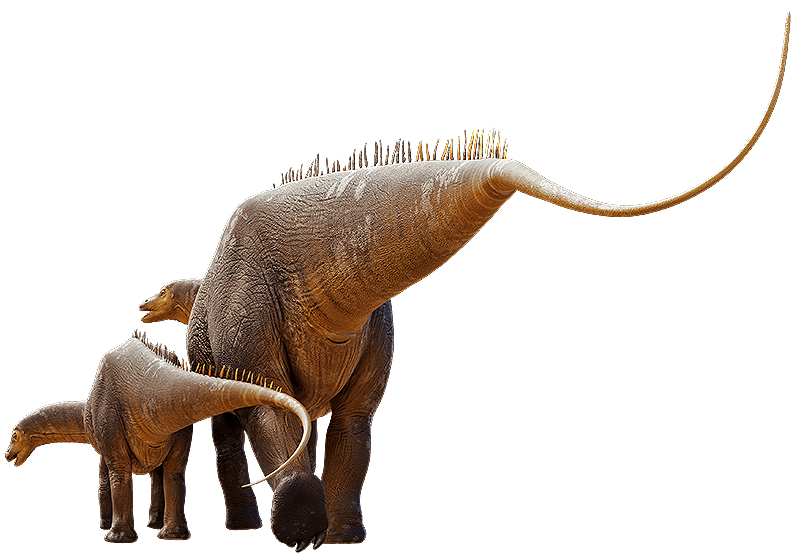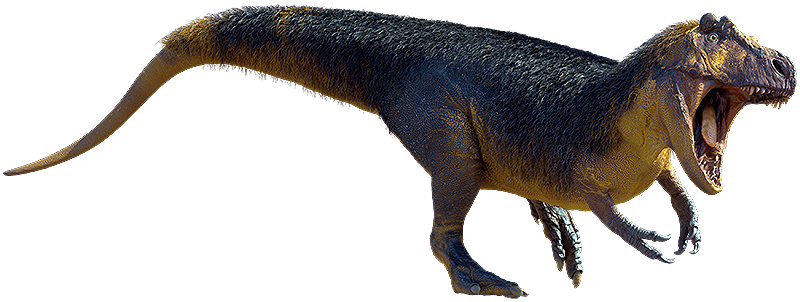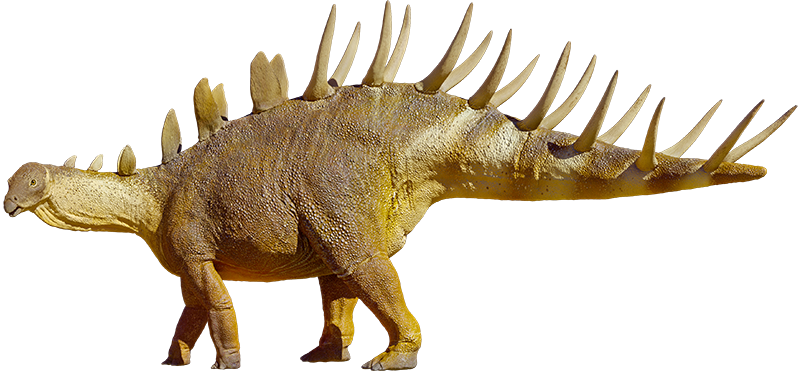
Ornithopods
All Australian ornithopods were bipedal (walked on two legs), but many larger ornithopods from other parts of the world sometimes walked on four legs.

Sauropods
Sauropods were gigantic, long-necked, quadrupedal (walked on four legs) herbivores (plant-eaters).

Theropods
Theropods were bipedal (walked on two legs) and had sharp claws and teeth to catch and devour their prey.

Thyreophorans
Thyreophorans were small to very large in size, with armour plates and spikes, and were quadrupeds (walked on four legs).
360º Panoramas
View the 360º panoramas to see what Broome may have looked like when the dinosaurs walked here 130 million years ago
In Broome, while we have tracks but no body fossils we can be pretty confident about the general type of trackmaker (e.g., sauropod, theropod, etc), but beyond that it is almost impossible to pin a track to a specific species of dinosaur (e.g., Australovenator wintonensis).
Sometimes if tracks indicate that the trackmaker was a certain size, had short or long toes etc, we might be able to be a bit more specific about what it might have looked like, especially if we know that dinosaurs like that existed at around the same time and in around the same place.
Take for example Megalosauropus broomensis (a type of theropod track), we know roughly what size the trackmaker might have been (1–2m at the hips) and that it had slender toes.
There are lots of theropods with those characteristics, but in Australia, to date, most of our mid-Cretaceous theropods seem to have been megaraptorids.
The best known Australian megaraptorids is Australovenator wintonensis. It was about 1.5 m high at the hips and it had slender toes.
Even though Australoventator wintonensis is nearly 40 million years younger than Megalosauropus broomensis, it’s likely that the ancestors of Australoventator wintonensis (ie, some type of megaraptorid) were in Australia around the time tracks we now call Megalosauropus broomensis were formed, so there’s a good chance that the Megalosauropus broomensis trackmaker was a megaraptorid-like theropod.
Assoc. Prof. Steve Salisbury (University of Queensland) says he is not 100% sure. But it could be due to the chemistry of the rocks.
For fossils to form there needs to be the right sedimentary environment – like a swamp, riverbank or lake where traces can be made or carcasses can be buried. Tracks and other traces need to harden a bit before they can be buried with more sediment, preserving them in the rock as it hardens and compacts. With organic remains, decomposition hard and soft tissue needs to be stabilised through reactions with minerals in the sediment and groundwater.
The near continuous supply of muddy sediment around Broome 130 million years ago was just right for preserving footprints. It was elastic and moist enough for clear impressions of feet to be made. After tracks were made there also seems to have been sufficient time for the mud to harden just enough so that the shape was retained when it was buried with more sediment.
For reasons that presently remain unclear, the remains of the dinosaurs that made all these tracks were not preserved. The type of sediment, the chemistry of the groundwater and other factors don’t seem to have facilitated fossilisation of hard or soft tissues.
The thousands of footprints we have around Broome tell a very real story.
Each footprint is where a dinosaur walked, stood or slipped. They show what types of dinosaurs were around, what their feet looked like, and what they were doing.
Body fossils tell a different type of story.
Whole skeletons are very rare. Most of the time it is part of a skeleton or more like a single bone. And that bone may have travelled a long way from where the animal lived and died. It does not give you direct evidence of what the animal was actually doing while it was alive.
One day some body fossils might turn up around Broome. Please keep looking and let us know if you find anything!
